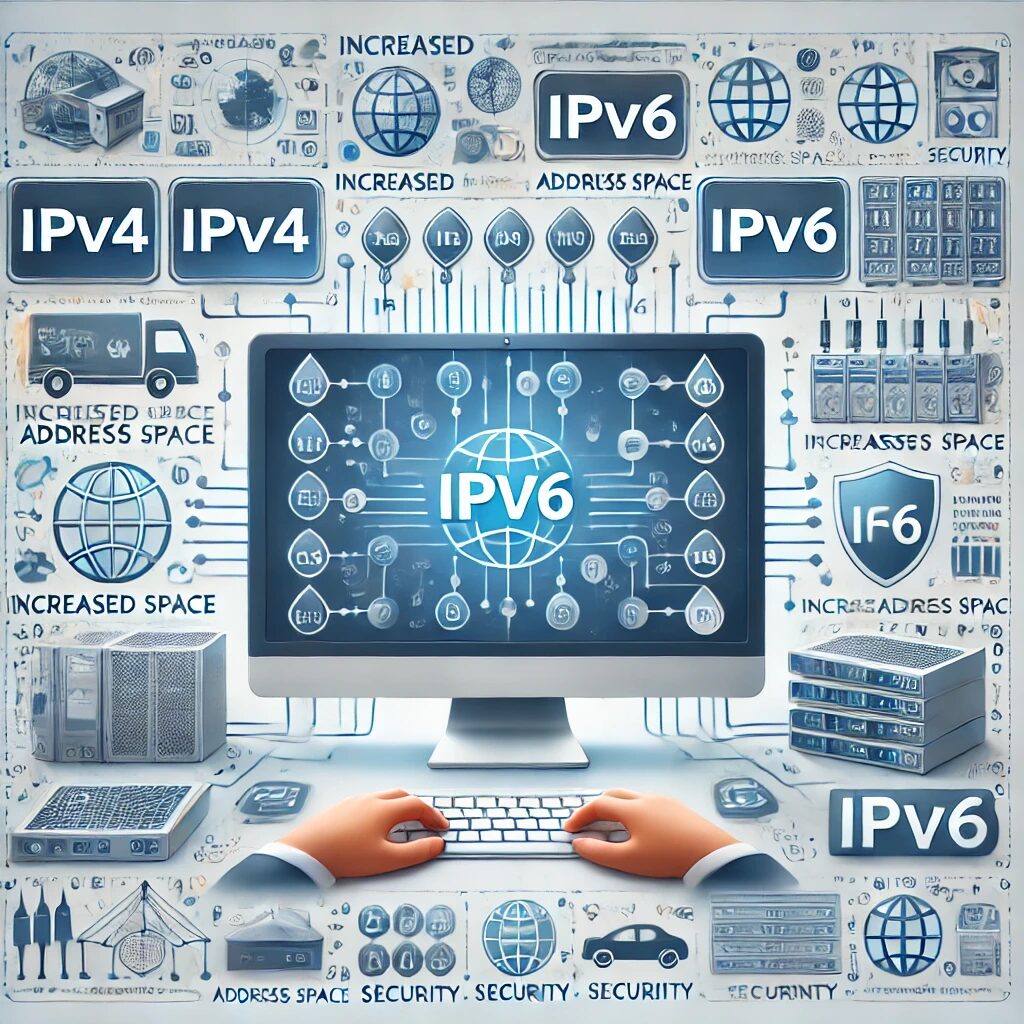Introduction
The internet has become an indispensable part of our daily lives, facilitating communication, commerce, and access to information on a global scale. At the core of this vast network is the Internet Protocol (IP), which ensures data is sent and received by the correct devices. The current widely used version, IPv4, has served us well since the early days of the internet. However, with the exponential growth of connected devices, the need to switch to IPv6 is more urgent than ever. This article explores the importance of transitioning from IPv4 to IPv6, highlighting the limitations of IPv4, the benefits of IPv6, and the future implications of this shift.
The Limitations of IPv4
IPv4, which stands for Internet Protocol version 4, was developed in the early 1980s. It uses a 32-bit addressing scheme, allowing for approximately 4.3 billion unique addresses. While this may have seemed more than sufficient during its inception, the explosion of internet-connected devices has quickly exhausted this supply. The proliferation of smartphones, tablets, IoT devices, and the growing number of internet users worldwide has led to a critical shortage of IPv4 addresses.
To cope with this shortage, techniques such as Network Address Translation (NAT) have been implemented. NAT allows multiple devices on a private network to share a single public IP address. While this has temporarily alleviated the problem, it introduces complexities and potential security vulnerabilities. Moreover, NAT is not a long-term solution, as it merely extends the life of IPv4 without addressing its fundamental limitations.
The Benefits of IPv6
IPv6, or Internet Protocol version 6, was developed to address the shortcomings of IPv4. It uses a 128-bit addressing scheme, providing an almost limitless number of unique IP addresses (approximately 340 undecillion). This vast address space is not only sufficient to meet current demands but also accommodates the anticipated future growth of the internet and its devices.
Expanded Address Space
The most significant advantage of IPv6 is its expanded address space. With the advent of the Internet of Things (IoT), where everyday objects such as appliances, vehicles, and even clothing are connected to the internet, the demand for IP addresses will continue to skyrocket. IPv6 ensures that there will be enough addresses to support this growing ecosystem without the need for complex workarounds like NAT.
Improved Security
IPv6 was designed with security in mind. It includes built-in support for IPsec (Internet Protocol Security), which provides end-to-end encryption and authentication. While IPsec can also be used with IPv4, it is optional and not universally implemented. The mandatory inclusion of IPsec in IPv6 enhances the security of data transmitted over the internet, reducing the risk of cyberattacks and unauthorized access.
Enhanced Performance and Efficiency
IPv6 simplifies packet processing by eliminating the need for NAT. This reduction in complexity can lead to improved network performance and lower latency. Additionally, IPv6 supports more efficient routing and auto-configuration capabilities, which streamline network management and reduce administrative overhead.
Better Support for Mobile Networks
As the number of mobile internet users continues to grow, efficient handling of mobile data is crucial. IPv6 includes features such as Mobile IP, which allows devices to move seamlessly between networks without losing connectivity. This is particularly important for applications like VoIP and real-time video streaming, where uninterrupted connections are essential.
The Transition to IPv6: Challenges and Opportunities
Despite its numerous advantages, the transition from IPv4 to IPv6 has been slow. Several factors contribute to this, including the need for infrastructure upgrades, software compatibility issues, and the sheer scale of the internet. However, the benefits of making this switch far outweigh the challenges.
Infrastructure Upgrades
ISPs, data centers, and network administrators must invest in upgrading their infrastructure to support IPv6. This involves updating hardware, such as routers and switches, as well as software that manages IP addresses and routing tables. While these upgrades require initial investment, they are essential for ensuring the long-term scalability and security of the internet.
Dual-Stack Implementation
One practical approach to transitioning to IPv6 is the implementation of dual-stack networks, where both IPv4 and IPv6 are run simultaneously. This allows for a gradual migration, ensuring compatibility with existing IPv4 systems while new IPv6 infrastructure is deployed. Dual-stack implementation provides a flexible pathway to a full IPv6 network without disrupting current services.
Encouraging Adoption
Governments, industry bodies, and major tech companies play a crucial role in encouraging IPv6 adoption. Policies and incentives that promote IPv6 deployment can accelerate the transition. Additionally, raising awareness about the benefits of IPv6 and providing training for IT professionals can help overcome the knowledge gap and drive adoption.
Conclusion
The transition from IPv4 to IPv6 is not just a technical upgrade; it is a necessary evolution to sustain the growth and security of the internet. IPv4’s limitations, particularly its limited address space, have become increasingly apparent in the face of rapid technological advancements and the proliferation of connected devices. IPv6 addresses these limitations, offering expanded address space, enhanced security, improved performance, and better support for mobile networks.
While the transition presents challenges, the long-term benefits of IPv6 make it an essential step for the future of the internet. By investing in infrastructure upgrades, implementing dual-stack networks, and encouraging widespread adoption, we can ensure a smooth and successful transition to IPv6, paving the way for a more secure, efficient, and scalable internet.


